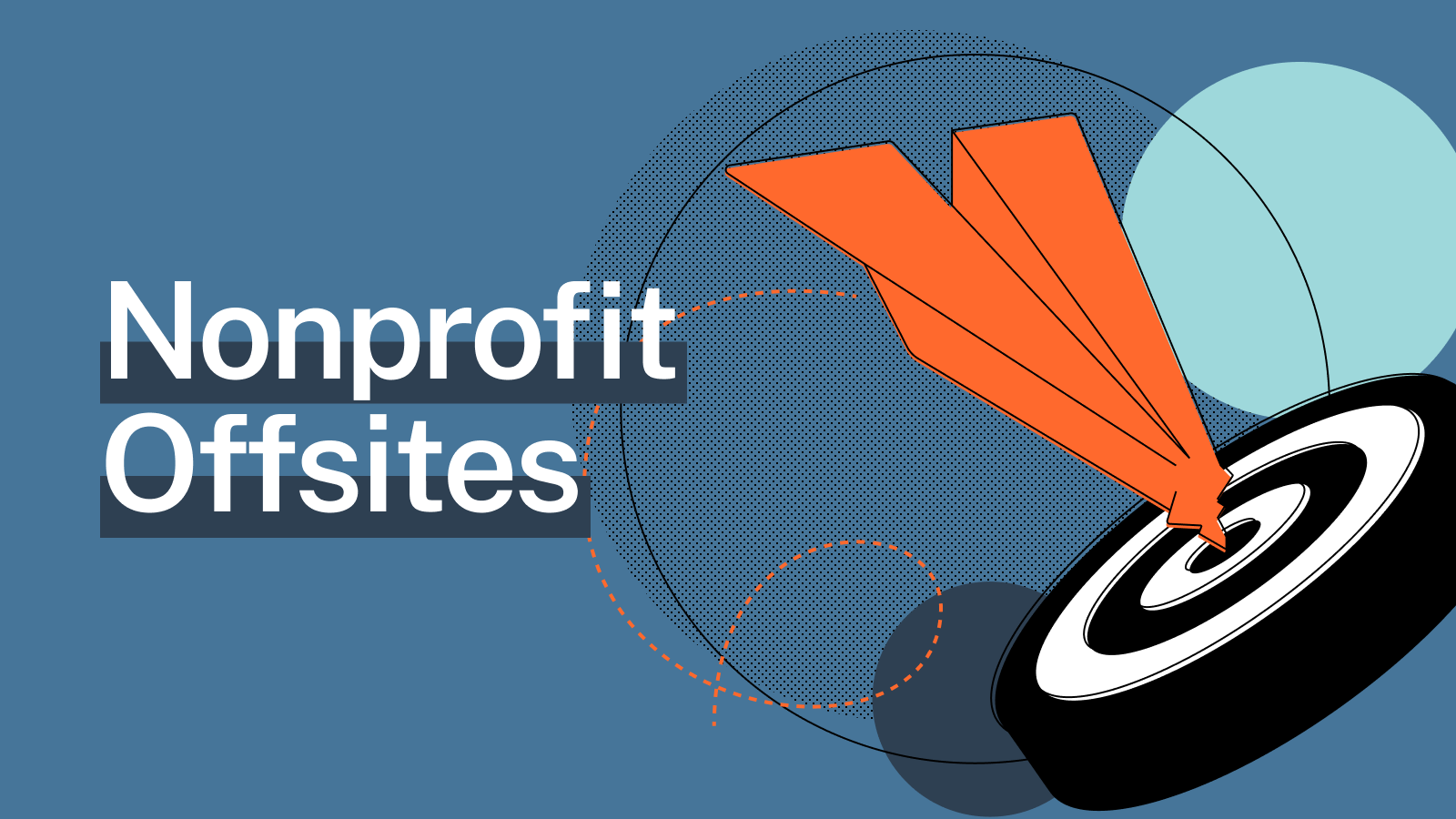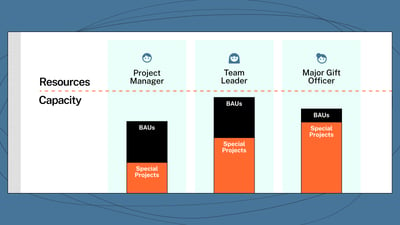Productive and Memorable Nonprofit Offsites

First of all, what is a “nonprofit offsite” and why have one?
Held outside the usual workplace, a nonprofit offsite (or, nonprofit retreat) is an event at which all members of a nonprofit come together to achieve specific objectives.
Duration is up to you, but it can run anywhere from a single day to a full workweek.
Though topics vary widely from one group to another, all nonprofit offsites have one goal in common: Boosting morale, motivation, and performance for greater organizational success.
This is most effectively done with a solid mix of workshops, exercises, presentations, food, and fun.
But a successful nonprofit offsite doesn’t just happen.
I lead CauseMic, a nonprofit growth consultancy that has facilitated offsites for hundreds of nonprofits like the renowned Surfrider Foundation, Dig Deep, and World Bicycle Relief.
And I’m going to share some of our time-tested processes to make your offsite productive, memorable, and enjoyable.
Keep ‘em Focused and Engaged
The best nonprofit offsites start with a well-thought-out agenda and scheduling that leaves no doubt as to what happens when.
You’ll want to have a cache of inspirational content—you know, things like speakers, photos, videos, and stories that engage attendees.
The agenda should include a presentation that clarifies where you’re headed as an organization.
You should incorporate team-building activities like icebreakers and assessments to get to know one another.
One of our go-to ice breakers is to combine a question like, “When did you last break a rule and what was it?” with “What do you hope to get out of this offsite?”
The first question loosens folks up, and the other helps ensure alignment.
On the assessment front, we love CliftonStrengths run by Gallup. Based on answers to 177 questions, this assessment describes what they call a person’s “talent DNA.”
It’s a good use of 45 minutes for each of your team members.
When shared at the offsite, the assessments allow team members to learn more about one another’s strengths and how they can apply them to work.
By the way, ensure the assessments are done before your offsite, so they’ll already be on-hand for any team-building exercises.
Speaking of which, a considered agenda should always include structured exercises. I’ll get to them now, but you can also check them out in my book, “The High-Growth Nonprofit” (get your free copy here!).
Facilitate with Structured Exercises to Free the Mind
So what is a structured exercise?
In a nutshell, it’s a session facilitated in such a way as to reach a decision, a solution, a strategy, or some other desired outcome.
One of our favorite structured exercises is the problem-solving framework, which encourages all attendees to attack problems using a "How might we" exercise.
For this, it’s best to have an idea of what problem you’re trying to solve before heading into the offsite.
For example, ask yourself, “What is truly standing in the way of our growth?”
Maybe your marketing and fundraising teams are siloed. Or your technology is outdated, making it hard to get the data you need for choosing a path.
Whatever it is, you can use our problem-solving framework to:
- Identify what’s not working
- Prioritize solutions
- Make decisions
It begins with attendees writing down any organizational challenges, each on its own Post-It note that gets stuck up on a wall.
The suggested timing is perhaps seven minutes, and then everyone votes silently with sticky dots on which problems are the most pressing.
After reviewing the top vote-getters, the facilitator reframes each with “How might we…?”
For example, the problem of “Unpredictable Donations” may get reframed as, “How might we convert one-time donors into monthly givers?”
Answering the question, attendees write as many solutions as they can in seven minutes, again on individual Post-Its and then silent voting with multiple picks.
Top vote-getting suggestions are then positioned in an “Impact/Effort” grid according to shout-outs by attendees, with the sweet spot being “High Impact, Low Effort.”
This quadrant features solutions that can be executed in the immediate future, with their authors specifying the recommended steps.

To me, these “Quick Wins” are crucial for solving organizational problems, like our example of wanting to “convert one-time donors into monthly givers.”
Because let’s face it—while solutions placed in the other three quadrants may be good ones, they have much less chance of being initiated.
That’s why identifying your quick wins at a team offsite is so important.
They’re rapidly doable, the steps for how to do them are known, and responsibilities and deadlines can be assigned on the spot.
Once one or two quick wins actually occur, your team will be inspired to keep taking steps to convert those one-time donors to recurring supporters.
The Retrospective: Looking Back So You Can Forge Ahead
Another one of our favorite exercises to facilitate is retrospective (or retro). This simple exercise involves everyone looking back on a recent project to identify what worked well and what didn’t.
Having identified your target project, put a strip of painter’s tape horizontally on the wall for a project timeline.
Ask your attendees to identify all the major milestones on Post-Its, and place them accordingly.
Now ask them to take seven minutes to “Post-It” write what worked well, after which individuals briefly present their comments.
The facilitator should actively listen for opportunities to group those that are similar.
Then, give folks seven minutes to write down what didn’t work well, again followed by brief presentations.
Lastly, the facilitator should ask people to spend seven minutes identifying what went so well that the group should double down on it for upcoming projects.
A co-facilitator captures the timeline along with the various Post-It views. Your team can then use this to document ways of improving their future efforts.
Facilitation Skills Are a Must
I’ve mentioned “facilitate” quite a bit in this article, and for good reason.
Though almost anyone can lead a nonprofit offsite, accomplished facilitators can make a huge difference when it comes to meaningful outcomes.
Using strong communication skills, adept facilitators actively listen, keep the offsite focused, employ empathy and emotional intelligence, stimulate creativity, and readily adapt.
They can help keep discussions on track, manage time effectively, and ensure that everyone's voice has room to be heard.
They’re also able to create a safe and inclusive environment where team members feel comfortable sharing their ideas, opinions, and concerns.
Bottom line? A good facilitator successfully encourages active participation, which invests your team in the organization’s success.
Get Your Offsite On Target
A nonprofit offsite is a notable investment of time, logistics, and money, and it’s easy to get overwhelmed.
We can help ensure that doesn’t happen and make it all worthwhile. If you want to prime your next offsite for success, book a free consultation with CauseMic’s experienced facilitators.



